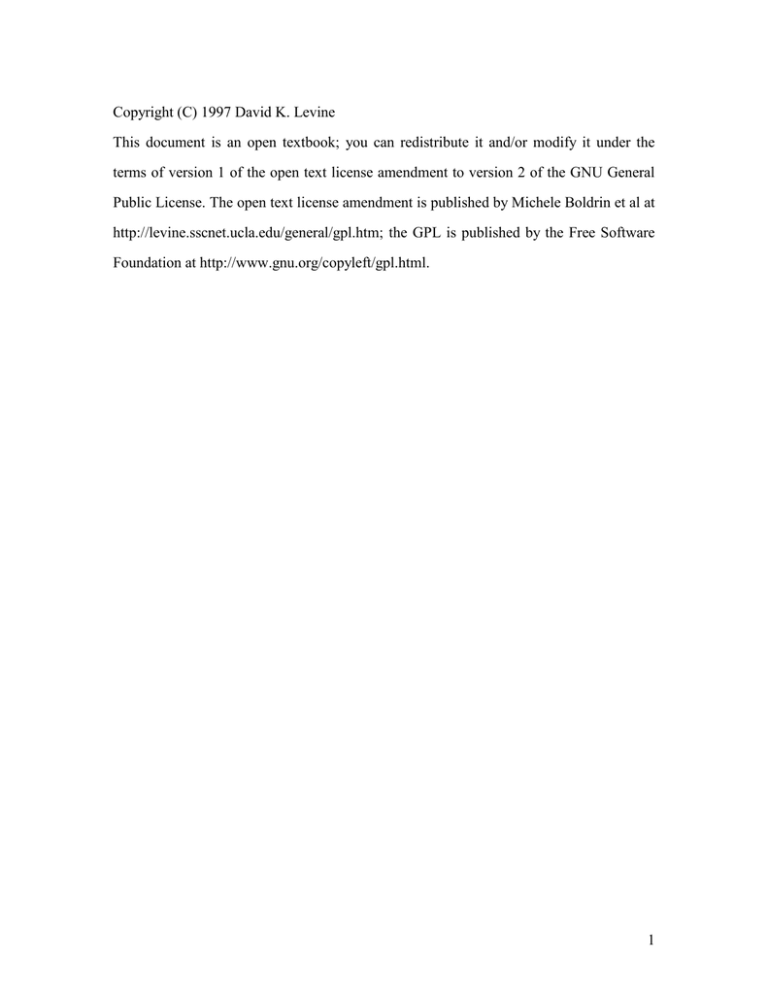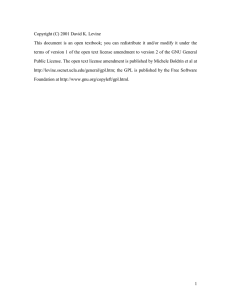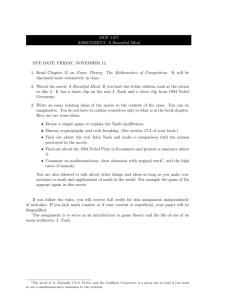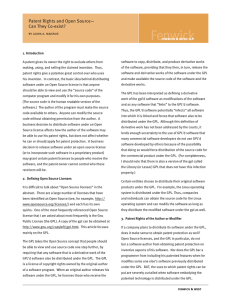Copyright (C) 1997 David K. Levine
advertisement

Copyright (C) 1997 David K. Levine This document is an open textbook; you can redistribute it and/or modify it under the terms of version 1 of the open text license amendment to version 2 of the GNU General Public License. The open text license amendment is published by Michele Boldrin et al at http://levine.sscnet.ucla.edu/general/gpl.htm; the GPL is published by the Free Software Foundation at http://www.gnu.org/copyleft/gpl.html. 1 Problem Set 3: Dynamic Game Theory 1. Forward Induction Stephen J. Seagull must decide whether or not to start a new movie project. If he decides not to, he and Clod VandeCamp both get a utility of ten. If he decides to begin the project, both he and Clod must simultaneously decide who the director should be: George Spellbinder, or Ed Tree. If they disagree on the director, the movie isn’t made, but both have wasted time, so they get only a utility of zero. If they agree on George Spellbinder, the movie will be a roaring success, and each gets a utility of 20. If they agree on Ed Tree, the movie will be terrible, and they will only get a utility of 5. Draw the extensive form of this game. Find the normal form. Find all the Nash equilibria. Find all the subgame perfect equilibria. Apply the theory of iterated weak dominance. 2. The Folk Theorem For each of the following simultaneous move games, find the static Nash equilibria, and give an accurate sketch of the socially feasible individually rational region. a) L R U 4,3 0,7 D 5,0 1,2 2 b) L R U 6,6 5,0 D 0,5 0,0 3. Equilibrium in a Repeated Game Consider the simultaneous move stage game: U D U 1,1 -1,100 D 100,-1 0,0 Consider the “grim” strategy of playing U in period one, playing U as long as both players have played U in the past, and playing D otherwise. For what discount factors d do these strategies form a subgame perfect equilibrium? 3




